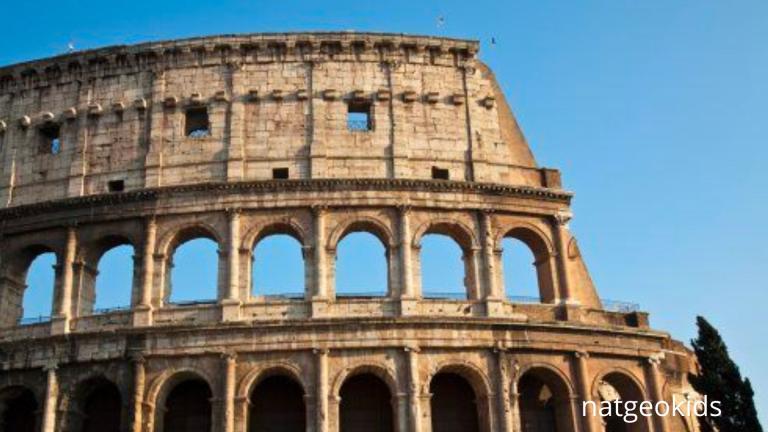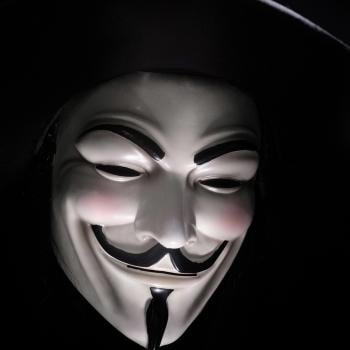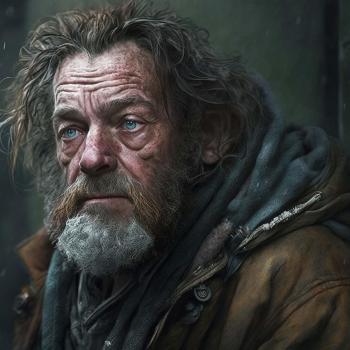
Let me say it straight up: understanding what the book of Revelation (and the whole of the Bible) says about the nature of the kingdom of God and the kingdoms of the world is of utmost significance. This is especially the case for the western church in the early part of the 21st century.
NT scholar Gordon Fee states it plainly: “The main themes [of the book of Revelation] are clear. The church and state are on a collision course of some magnitude over who runs the universe, and John [the author of the book of Revelation] fully recognizes that power and victory presently appear to belong to the state.”[1]
I would begin by noting that one of the ways to view the biblical story (including the book of Revelation) is in light of the question: Who rules?
NB: This question is as basic to Christian discipleship as it is to understanding the biblical story. Discipleship demands that we regularly examine our own lives and ask, “who rules?” Too often we have placed self on the throne and we don’t see it. In fact, we often place self on the throne and find a multitude of ways of justifying it.
Who/what is the Beast in Revelation 13?
NB: I am using “anti-Christ” in the title of this series not because I believe that the Beast is the anti-Christ per se, but as a concession to the popular conception that the Beast is the anti-Christ. The “Anti-Christ” does not appear in the book of Revelation. Nonetheless, many Christians assume that it/he does and they conflate “anti-Christ” with the Beast.
In order to answer this question, we must recognize several keys.
First, there is little doubt that John’s depiction of the Beast from the sea in 13:1-8 has the four beasts of Daniel 7 in view. This is evident from the fact that:
- The four beasts in Dan 7:4-7 have a combined total of seven heads.[2] The Beast in Revelation 13 also has seven heads (13:1).
- Daniel’s fourth beast has “ten horns” (Dan 7:7): the Beast in Revelation 13 also has “ten horns” (13:1)
- Daniel’s beasts have the features of a “lion” (Dan 7:4), a “bear” (Dan 7:5), and a “leopard” (Dan 7:6): the Beast in Revelation 13 was “was like a leopard, and its feet were as a bear, and its mouth was as the mouth of a lion”(13:2; my translation).
It is easy to see that John’s Beast is a composite of all four beasts of Daniel 7.
This means that we must understand the beasts of Daniel 7 in order to comprehend the Beast of Revelation 13.
We begin by noting that Daniel explicitly tells us that the four beasts represent four kingdoms: “These great beasts, which are four in number, are four kings who will arise from the earth” (Dan 7:17).
This raises the question: if the four beasts of Daniel 7 are four kingdoms, then which kingdoms do they represent? Most biblical scholars are in one of two camps:
- they represent the Babylonian, Medo-Persian, Greek, and Roman empires
- they represent the Babylonian, Media, Persian, and Greek empires
Which of these is correct matters little to us at this time.
What kingdom(s) is the Beast of Revelation 13?
If the Beast of Revelation 13 is depicted as a composite of all four of Daniel’s beasts, then what kingdom(s) does it represent? The scholarly world offers several suggestions. Some say the Beast is:
- the ancient Roman empire
- a future “last days” revival of the Roman empire.
- all empires in history.
This latter view is the position I take. That is, John sees one Beast, but this Beast represents all empires in history.
In my opinion, this position accounts best as to why the book of Revelation combines all four of Daniel’s beasts into one.
This position also makes sense in light of the fact that the apocalyptic literature and the book of Revelation repeatedly understand “four” to represent totality with regards to the creation (e.g., the four winds, and the four directions: see Rev 7:1).
For John, the Beast is Rome. At the same time, the Beast (Rome) embodies all empires in history.
So what does this mean?
Well, we need to dig a little further in order to shed more light on this. But I would reiterate that the biblical text (including the book of Revelation) portrays the cosmic battle as a war between Christ as King and the nations.
I will certainly expand on this in upcoming posts. But I don’t need to go any further to say: that if the biblical story portrays the cosmic battle as a war waged by the nations against Christ, then,
- There is no place for any kind of nationalism in the church.
This does not mean that one cannot be patriotic. It means that one cannot wed the church and the state. The church and the state are “unwedable.” (I know spell check does not like this word but it works).
- All nations ultimately stand opposed to the work of Christ and the cross.
Conclusion: why it matters
Let me say it this way (and I will defend this claim as I continue this series): it is my conviction that much of the western church has largely fallen prey to the Beast of Revelation 13. And, I would add, it has also been seduced by the Harlot of Revelation 17-18.
What do I mean? to be continued. . . .
NB: our goal is to keep these posts free of charge. I do not intend to ever hide them behind a paywall. I can only do this if those of you who have been blessed by them and can afford to give ($5, $10, $25, or more/month) do so. You can give a tax-deductible contribution by following this link.
Please share this post and let others know about determinetruth.
If you wish to view this blog on your smartphone through the Determinetruth app simply download the “tithe.ly church” app on your smartphone and insert “determinetruth” as the church name you wish to follow. Once it is loaded, simply click on the “blog” icon and it will automatically load.
If you would like to have Rob speak at your church or organization in person or via zoom, please let us know by filling out the contact info on the Contact me tab on this site.
[1] Fee, Revelation, xvii.
[2] Cf. Dan 7:4-7. The third beast is said to have four heads (Dan 7:6). Since it is presumed that the other three beasts each have one head, the total number of heads of the four beasts then is seven.












